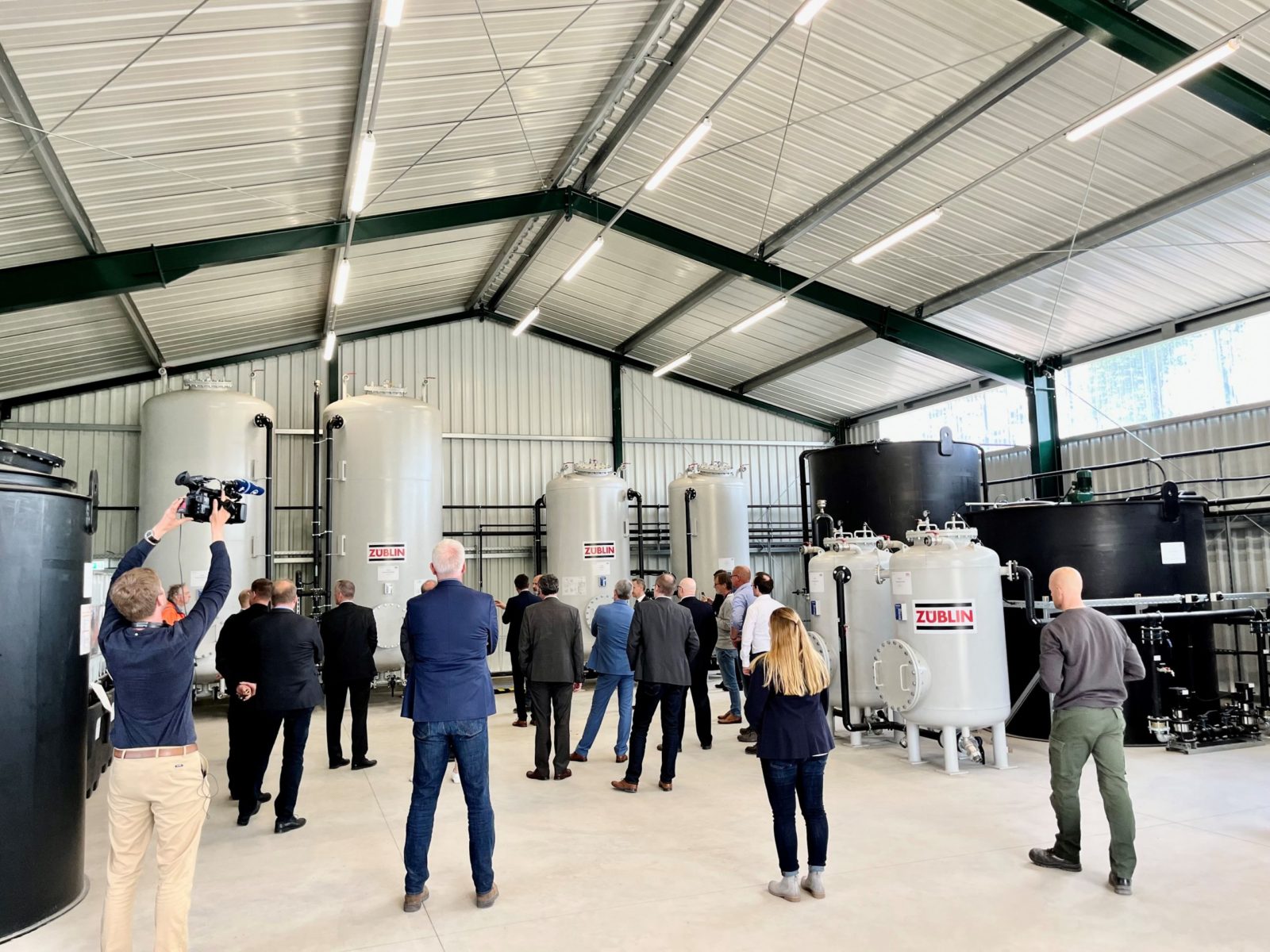

The Dethlingen pond near Munster, a former diatomaceous earth mining pit, was filled with chemical warfare agents during the Second World War and in the years thereafter. After careful planning (M&P Ingenieurgesellschaft mbH) and based on the test opening carried out in 2019, this old armament site is now to be remediated. In autumn 2019, a total of 2,552 ordnance grenades were found in 120 m³ of excavated material during the test opening. The team of experts (M&P, Prof. Burmeier Gesellschaft, the Heidekreis and GEKA) assume that with a volume of the Dethlingen pond of 30,000 m³, there are approximately 30,000 pieces of combat munitions to be recovered. Before the pond can be opened, the groundwater must be gradually lowered so that the subsequent ordnance remediation can take place in dry conditions. Due to decades of contact with partially leaking munitions, the groundwater has been considerably contaminated with chemical warfare agents, toxic decomposition products and heavy metals such as arsenic.
In the future, the pit is to be enclosed by a 20 m deep sheet pile wall so that no groundwater can flow in from outside the pond. The contaminated groundwater is to be pumped out via three extraction wells in the catchment area of the pond and purified in a multi-stage treatment plant by Züblin Umwelttechnik in accordance with the official requirements so that it can be re-infiltrated outside the Dethlingen pond.
In the course of the multi-stage purification process, the groundwater is first neutralised by lowering the high pH value to the neutral range. At the same time, dissolved and oxidisable compounds are converted into filterable solids so that they can be removed from the water in the subsequent gravel filter. Further purification of the inorganic arsenic compounds and other heavy metals is carried out with the help of a special filter granulate. This is followed by two large water activated carbon filters. These form the main purification stage for the dissolved organic pollutants, which are bound by means of physical adsorption forces. The final treatment stage is followed by two ion exchangers to remove residual concentrations. A 15 x 24 m prefabricated hall protects the plant from the weather.


The operation of the groundwater purification plant is fully automatic. The plant is equipped with a programmable logic controller, a data acquisition system and a visualisation system. Operation can be intervened in both from the plant and externally via a protected data connection. In addition, the system is equipped with an alarm system so that in the event of a malfunction, the parties involved are immediately informed so that suitable measures can be initiated immediately.
Groundwater purification and lowering are planned for at least the next five years. External monitoring of the groundwater purification system will be carried out by M&P Ingenieurgesellschaft mbH in the next few years during the actual explosive ordnance remediation.


Lower Saxony's Environment Minister Olaf Lies, Munster's Mayor Ulf-Marcus Grube and District Administrator Jens Grote put the groundwater purification plant into operation on 11 May 2022 with a joint push of a button. Beforehand, the remediation concept and the plant were presented by M&P Ingenieurgesellschaft mbH together with Züblin Umwelttechnik to the press, other stakeholders and representatives of the authorities.
Press:
BZ_2022-05-12-The contaminated sites will soon be under control
(Source: Böhme Zeitung)
WZ_2022-05-13 - Dethlingen pond - groundwater purification plant
(Source: Walsroder Zeitung)
https://www.ndr.de/fernsehen/sendungen/niedersachsen_1800/Niedersachsen-1800,ndsmag46608.html
(Source: NDR) from minute 12:40
#mupgroup #engineeringforabettertomorrow #Environmental Minister #Dethlingen Pond #Commissioning #Groundwater treatment plant #Fighting materials #Sanitation

